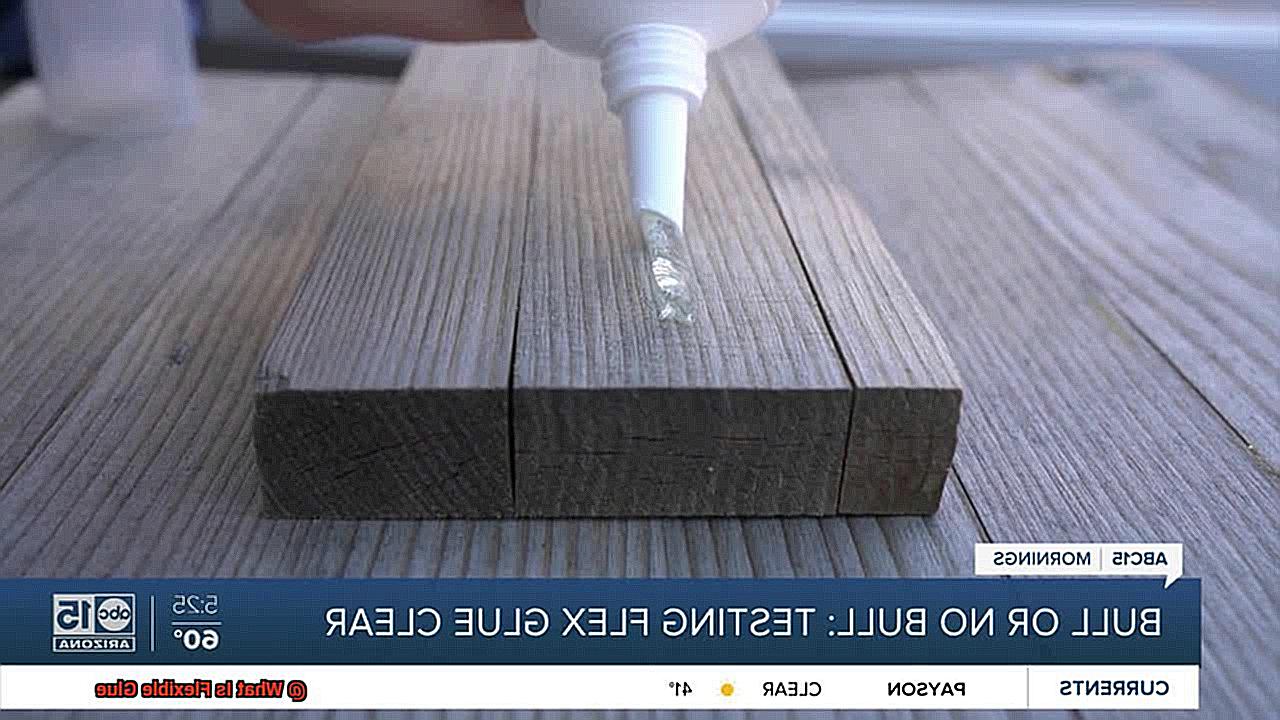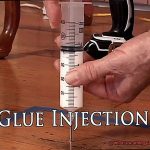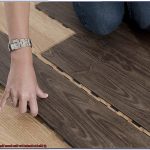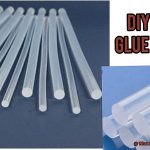Tired of glue that cracks and crumbles under pressure?
Say hello to flexible glue, the superhero of adhesives. Whether you’re a craft enthusiast, a handy homeowner, or a professional fixer-upper, flexible glue is about to rock your world.
This magical adhesive is specially designed to withstand extreme bending, twisting, and flexing without losing its strength. It’s like having Hulk-like power in a tiny tube.
But what exactly is flexible glue? How does it differ from those flimsy traditional glues?
Buckle up, because we’re about to dive into the exciting world of this incredible adhesive and discover why it deserves a permanent spot in your toolbox.
How Does Flexible Glue Work?
Contents
- 1 How Does Flexible Glue Work?
- 2 Advantages of Flexible Glue
- 3 Types of Flexible Glue
- 4 Choosing the Right Flexible Glue
- 5 Applications in Automotive Industry
- 6 Applications in Construction Industry
- 7 Applications in Electronics Industry
- 8 Tips for Using Flexible Glue Effectively
- 9 mmary of the key points discussed about flexible glue
- 10 Conclusion
In the realm of adhesive solutions, flexible glue stands as an unsung hero, providing a magical bond for materials that require flexibility or movement. Its extraordinary properties make it an indispensable tool across industries, from automotive to construction. In this captivating exploration, we will unravel the mechanics behind flexible glue, delving into its workings and uncovering why it is the go-to adhesive for those seeking unrivaled strength with the freedom to flex.
The Science Behind Flexible Glue:
At its core, flexible glue consists of a polymer base that imparts its adhesive properties. This base is meticulously crafted from a selection of materials such as silicone, polyurethane, or rubber-based polymers, chosen for their remarkable ability to withstand stress and movement while maintaining formidable bonds.
The Curing Process:
Flexible glue’s magic lies in a transformative process called curing. During this process, the glue undergoes a chemical reaction that takes it from a liquid or semi-liquid state to a solid one. The polymer molecules within the glue intricately intertwine and bond together, creating an unyielding network that holds the bonded materials steadfastly.
Initiating Curing:
To initiate curing, various methods may be employed depending on the specific type of flexible glue being used. Some glues rely on exposure to air or moisture to cure, while others necessitate heat or ultraviolet (UV) light. Following the manufacturer’s instructions diligently is crucial to ensure optimal bonding and performance.
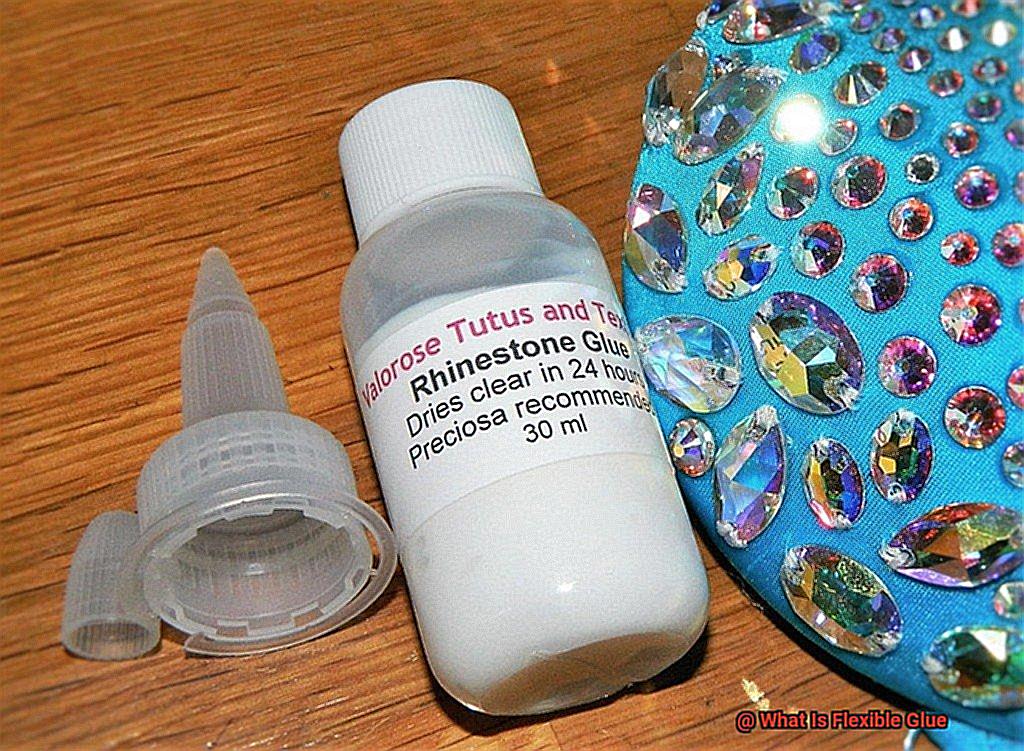
The Perfect Marriage of Strength and Flexibility:
Once the flexible glue has completed its curing process and successfully formed a bond between two materials, it showcases unparalleled adhesion and flexibility. This remarkable combination permits a degree of movement or expansion and contraction without compromising the bond’s integrity. Whether confronted by temperature fluctuations or mechanical stresses, flexible glue stands ready to conquer any challenge.
Versatility and Resistance:
Flexible glue shines as a true workhorse, seamlessly adapting to a multitude of industries and applications due to its exceptional resistance to environmental factors such as moisture, heat, and chemicals. Its boundless versatility allows it to bond materials ranging from rubber and metal to plastic, fabric, and wood, making it the adhesive of choice in countless scenarios.
Application Forms:
As if its properties weren’t already impressive, flexible glue further distinguishes itself by offering diverse application forms tailored to specific bonding needs. Liquid adhesives prove ideal for bonding flexible materials like rubber, fabric, or plastics, while flexible tapes provide a convenient option for applications that require easy application and removal without leaving any residue. Sealants incorporating flexible glue fill gaps or joints between materials, ensuring an airtight and watertight seal while accommodating movement or expansion.
Advantages of Flexible Glue
When it comes to finding the perfect adhesive, flexibility is the key. Enter flexible glue, the superhero of adhesives, with its extraordinary advantages that make it the go-to choice for all your bonding needs. In this blog post, we will uncover the superpowers of flexible glue and why it should be your top pick for any project.
The Chameleon of Adhesives:
Flexible glue is a true chameleon in the adhesive world. It can effortlessly adhere to a wide range of surfaces, including plastics, rubber, metal, and fabric. This versatility makes it suitable for countless applications, from repairing shoes to bonding automotive parts or creating exquisite crafts. Whatever your project entails, flexible glue has got you covered.
Resilience That Defies Expectations:
Imagine a glue that can withstand movement and vibrations without losing its grip. Flexible glue does exactly that. Its resilience is perfect for applications where flexibility is crucial, such as bonding materials that are subjected to frequent bending or stretching. Say goodbye to worries about your repaired chair upholstery or broken shoe sole coming undone.
Formidable Bonding Strength:
Flexible glue has mastered the art of creating strong bonds between different materials. Its unique formula allows it to penetrate surfaces and form a secure connection between the adhesive and the substrate. The result? A bond that can withstand temperature changes, moisture, and even exposure to UV radiation. Your projects will remain intact no matter what Mother Nature throws at them.
Unyielding Against Impact:
For industries like automotive and construction, where heavy loads and sudden impacts are common, flexible glue is an absolute game-changer. Its excellent impact resistance ensures that bonded materials remain strong even under challenging conditions. Whether you’re building structures or designing components, flexible glue has got your back.
Quick and Easy Application:
Flexible glue values your time. That’s why it comes in user-friendly formats like squeeze tubes or applicator pens, making application a breeze. With its quick-drying formula, you can achieve efficient bonding without the need for clamping or extended curing times. It’s a dream come true for professionals and DIY enthusiasts alike.
A Survivor in Any Environment:
Flexible glue is a true survivor. It thrives in moisture, heat, and chemicals, making it suitable for both indoor and outdoor applications. Whether you’re bonding components for an outdoor sign or repairing a water-damaged item, flexible glue provides a reliable solution that can withstand the challenges posed by different environments.
Types of Flexible Glue
Flexible glue is a reliable solution for bonding materials that require flexibility and movement. Unlike traditional glues, flexible glue maintains a strong bond even when subjected to stress or frequent movements. In this article, we will explore the various types of flexible glue available in the market and their unique properties and applications.
Silicone-Based Adhesive:
Silicone-based adhesive is one of the most popular types of flexible glue. Known for its flexibility, durability, and resistance to heat and moisture, silicone glue is a versatile option. It finds applications in automotive, plumbing, and electrical industries. From sealing gaps in car windows to bonding flexible plastic components, silicone-based adhesive is a reliable choice that allows for movement without compromising the bond.
Polyurethane Adhesive:
Polyurethane glue is another type of flexible adhesive that offers a strong bond combined with flexibility. This adhesive can be used on different materials such as wood, metal, plastic, and fabric. Whether you’re repairing furniture or constructing wooden structures that require movement, polyurethane adhesive provides a reliable and flexible bond. It is also resistant to water and chemicals, making it suitable for outdoor applications.
Epoxy Resin:
Epoxy glue is renowned for its high strength and versatility. While not as flexible as silicone or polyurethane adhesives, epoxy resin can still provide a certain degree of flexibility depending on the formulation. It is commonly used in construction projects, jewelry making, and automotive repairs where a durable and flexible bond is required. Epoxy resin can withstand extreme temperatures and harsh chemicals, making it ideal for demanding applications.
Cyanoacrylate Adhesive (Super Glue):
Famous for its fast-drying and strong bonding capabilities, cyanoacrylate adhesive, also known as super glue, can also offer flexibility in certain applications. This type of glue is commonly used for bonding plastics, rubber, and metals where a quick and flexible bond is needed. It is ideal for small repairs and projects that require instant bonding.
Flexible Hot Melt Adhesive:
Flexible hot melt adhesive is a popular choice in manufacturing and assembly processes. With its low melting point, it provides a strong bond while remaining flexible. This type of glue is commonly used in industries such as packaging, textiles, and electronics. It allows for easy application and offers excellent adhesion to various substrates.
Choosing the Right Flexible Glue
Are you currently in a sticky situation, desperately searching for the perfect flexible glue for your project? Fear not, my friend. As an expert in the realm of “Choosing the Right Flexible Glue,” I am here to impart my wisdom and guide you towards making the best decision.
First and foremost, let’s address the materials you are working with. Flexible glues have the remarkable ability to bond a wide range of surfaces, including rubber, plastic, metal, fabric, and more. It is imperative to select a glue that is compatible with the specific materials at hand. After all, you wouldn’t want your bond to go “snap” instead of “stick.”
Now let’s delve into the realm of strength and flexibility. Some flexible glues are specifically engineered to handle heavy loads and endure high levels of stress. On the other hand, there are those that offer greater flexibility but possess a slightly lower strength. Assess the unique requirements of your project and choose a glue that perfectly aligns with those needs. It’s akin to finding that ideal partner – they must seamlessly complement each other.
Environmental conditions play a crucial role as well. If your project is likely to be exposed to water, heat, chemicals, or UV radiation, it is essential to select a glue that offers the necessary resistance. After all, you wouldn’t want your bond to disintegrate under pressure.
Let’s shift our attention to application methods. Some glues are conveniently packaged in tubes or cartridges and can be effortlessly applied using a caulking gun or adhesive dispenser. Others may come in spray form or necessitate mixing before use. Carefully consider what suits your project best and make your selection accordingly. Remember, applying glue should be as easy as pie.
Lastly, never underestimate the power of research. Take the time to peruse reviews and gather feedback from individuals who have previously utilized the flexible glue you are contemplating. Their experiences can offer invaluable insights into the performance, durability, and overall quality of the product. Think of it as receiving a personal recommendation from a trusted friend.
Applications in Automotive Industry
In the fast-paced realm of the automotive industry, a silent hero emerges – flexible glue. This remarkable adhesive not only bonds and assembles an array of components but also safeguards against environmental hazards, securely attaches badges and emblems, and expertly repairs damaged automotive parts. Join us as we delve into the extraordinary applications of flexible glue and uncover its indispensable role in enhancing the durability and functionality of vehicles.
Bonding and Assembly:
When it comes to bonding and assembling components, flexible glue takes center stage in the automotive industry. From securing interior trims to attaching exterior body panels, this adhesive ensures a resilient and enduring bond capable of withstanding the relentless stresses and vibrations experienced by vehicles. Its remarkable ability to bond materials with differing properties, such as rubber seals to metal frames or plastic parts to glass surfaces, positions it as an invaluable adhesive for creating impenetrable seals that prevent leaks or gaps.
Protection Against Environmental Factors:
In a world teeming with harsh environmental conditions, automotive components require unwavering protection. Enter flexible glue, the ultimate guardian against extreme temperatures, moisture, UV radiation, and corrosive chemicals. Whether deployed within the vehicle or exposed to the elements outside, this adhesive forms an impenetrable barrier that thwarts damage caused by these relentless forces.
Attaching Badges and Emblems:
Automotive badges and emblems add an exquisite finishing touch to a vehicle’s appearance. To ensure their unwavering presence despite high-speed drives or tumultuous weather conditions, flexible glue proves its mettle. This exceptional adhesive offers an impeccable solution for affixing metal or plastic badges, guaranteeing they remain steadfastly in place while retaining their aesthetic allure.
Repairing Automotive Components:
When repairs are necessitated, flexible glue springs into action. It possesses the prowess to mend cracked plastic parts and seamlessly reattach loose trim pieces with unparalleled ease. Its versatility in adhering to diverse surfaces renders it suitable for a wide range of repair tasks. By bestowing durability and strength upon the repaired components, flexible glue assists in restoring automotive parts to their original, pristine condition.
Applications in Construction Industry
Forget what you thought you knew about glue in construction. There’s a superhero adhesive that’s silently transforming the industry – flexible glue. This remarkable adhesive not only creates strong bonds but also accommodates movements and vibrations, ensuring our structures stand the test of time. In this blog post, we’ll delve into the diverse applications of flexible glue in the construction industry and how it guarantees durability and longevity in the face of changing conditions.
Flooring Materials:
Imagine a floor that can expand and contract without a single crack – that’s where flexible glue comes to the rescue. From vinyl to linoleum and carpet tiles, this adhesive marvel provides a robust and enduring bond that allows for movement without compromising flooring integrity.
Wall and Ceiling Installations:
Cracked walls and ceilings can be a builder’s nightmare. But fear not, flexible glue is here to save the day. It securely bonds drywall panels to studs, allowing slight movements without causing damage. The same principle applies to ceiling installations, ensuring tiles or panels stay put amidst vibrations or shifting structures.
Windows and Doors:
A watertight seal is crucial for windows and doors, and flexible glue delivers. It bonds glass panes to frames, providing strength and flexibility to accommodate expansion or contraction due to temperature changes. Say goodbye to drafts and leaks.
Countertops and Decorative Elements:
Flexible glue is also a star in countertop installations, offering a sturdy bond while allowing for slight movement caused by weight or thermal expansion. Additionally, it secures decorative elements like moldings and trims, ensuring they stay firmly in place despite any subtle shifts.
Applications in Electronics Industry
In the dynamic world of electronics, where innovation and adaptability reign supreme, a silent superhero has emerged to save the day – flexible glue. This mighty adhesive plays a vital role in ensuring the reliability and performance of electronic devices. Join us as we dive into the fascinating applications of flexible glue in the electronics industry and discover how it empowers our beloved gadgets.
Assembly of Flexible Printed Circuit Boards (PCBs):
Flexible PCBs have taken the electronics industry by storm, thanks to their ability to conform to intricate shapes within electronic devices. Enter flexible glue, the unsung hero that securely bonds delicate electronic components onto these thin, flexible substrates. With its unyielding grip, it ensures that the components stay firmly attached while allowing for the necessary flexibility.
Production of Flexible Displays:
The era of rigid screens is behind us as flexible displays take center stage, offering lightweight, slim, and durable screens. At the heart of these cutting-edge displays lies flexible adhesive, deftly bonding multiple layers together. From the resilient substrate to the conductive layers and protective coatings, this adhesive’s flexibility enables the display to bend and flex without compromising its structural integrity or visual brilliance.
Sealing and Bonding of Electronic Components:
In the battle against moisture, dust, and other environmental foes, electronic devices need a formidable ally – flexible adhesive. This superhero glue comes to the rescue by sealing joints and gaps between components, safeguarding against potential damage from intruding foreign substances. It also plays a crucial role in bonding connectors, cables, and wires within electronic devices, ensuring secure and reliable connections that stand up to the test of time.
Cushioning and Shock Absorption:
Delicate electronic components or devices facing mechanical stress require an extra layer of protection from impact and vibrations. Enter flexible glue, a cushioning material that absorbs shocks and dampens vibrations, shielding sensitive electronics from harm even in the harshest environments. Its flexibility ensures that these valuable components remain unharmed, ready to power our devices without skipping a beat.
Tips for Using Flexible Glue Effectively
Flexible glue is a remarkable adhesive that allows materials to bond while maintaining a degree of flexibility. Whether you’re engaged in craft projects or repairing household items, effectively using flexible glue is paramount to achieving strong and durable bonds. In this article, we will share expert tips and techniques to help you make the most out of your flexible glue.
Prepare the Surfaces:
Before applying flexible glue, proper surface preparation is crucial. Thoroughly clean the surfaces, removing any dust, dirt, or grease that could compromise the bond. Utilize a mild detergent or rubbing alcohol for cleaning, ensuring the surfaces are dry before proceeding. For smooth surfaces like plastic or metal, lightly roughen them with sandpaper to enhance adhesion.
Apply Evenly:
Remember, less is more when it comes to applying flexible glue. Use a brush or applicator to apply a thin, even layer of glue on both surfaces. Excessive glue can result in messy squeeze-out and weak bonds. Pay close attention to any specific instructions provided by the manufacturer regarding application techniques and curing times.
Choose the Right Type of Glue:
Not all flexible glues are created equal. Different formulations are designed to work best with specific materials. Ensure you select a glue that is compatible with the materials you are working with, such as rubber, leather, fabric, or plastics. This will ensure optimal adhesion and a long-lasting bond.
Proper Clamping or Holding:
To achieve maximum bond strength, proper clamping or holding is essential. Smaller objects can be held together using rubber bands or tape while the adhesive cures. For larger or heavier objects, use specialized clamps or weights to provide adequate pressure for bonding. Follow the manufacturer’s guidelines for recommended clamping times.
Allow Sufficient Curing Time:
Rushing the drying process can compromise the strength and flexibility of the bond. Respect the recommended curing time provided by the manufacturer. Avoid subjecting the bonded materials to excessive stress or movement during this period to ensure a strong, durable bond.
mmary of the key points discussed about flexible glue
Flexible glue is a game-changer when it comes to adhesive solutions. Unlike regular glue, which can crack and lose its adhesive properties when subjected to movement or bending, flexible glue contains elastomers or polymers that maintain its flexibility even after it has cured. This means that your bonds will stay strong, no matter how much they get twisted or stretched.
The versatility of flexible glue is one of its greatest advantages. It can bond a wide range of materials together, including rubber, leather, fabric, and plastics. From repairing sneakers to upholstering furniture to working on craft projects, flexible glue has got you covered.
But don’t think that flexibility compromises durability and strength. Once fully cured, flexible glue forms a bond that can withstand bending, stretching, and even vibrations. This makes it perfect for applications that require long-lasting bonds in dynamic environments.
To apply flexible glue effectively, prepare the surfaces by cleaning them and removing any contaminants. Apply the glue evenly and use clamps or other pressure methods to ensure a strong bond. And be patient – give the glue enough time to dry or cure fully before subjecting it to any stress or movement.
Drying or curing time can vary depending on the specific product and environmental conditions. Generally, it takes a few hours to overnight for flexible glue to fully cure. Plan your projects accordingly and give yourself enough time for the glue to work its magic.
When working with flexible glue, take appropriate safety precautions. Wear gloves to protect your skin, work in a well-ventilated area to avoid inhaling fumes, and always read and follow the manufacturer’s instructions for safe and effective use.
e2NxidtPhlY” >
Conclusion
Flexible glue is a remarkable adhesive that possesses the unique ability to bend and stretch without losing its grip. It is a versatile solution for various applications, whether it’s repairing a broken toy, bonding two different materials together, or securing objects in place. Unlike traditional glues that can become brittle or crack under pressure, flexible glue remains resilient and adaptable.
With its flexible nature, this adhesive can withstand the rigors of everyday use and movement. It can handle vibrations, impacts, and even extreme temperatures without compromising its adhesive properties. Whether you’re working on a craft project, fixing household items, or engaging in DIY repairs, flexible glue provides a reliable bond that lasts.
One of the key advantages of flexible glue is its ability to adhere to various surfaces. It forms strong bonds with materials like plastic, rubber, metal, fabric, wood, and more. This versatility makes it an indispensable tool for professionals across industries such as automotive repair, construction, manufacturing, and crafting.
Furthermore, flexible glue offers ease of use with its user-friendly application methods. It comes in different forms such as tubes or bottles with nozzles for precise dispensing. Some variants even offer quick-drying capabilities for efficient work processes. Whether you prefer liquid adhesives or gel-like formulas for vertical applications, there is a flexible glue option suitable for your needs.
In conclusion, flexible glue is a game-changer in the world of adhesives. Its unique ability to flex while maintaining a strong bond sets it apart from traditional glues. With its versatility and reliability across various materials and applications, it has become an essential tool for professionals and DIY enthusiasts alike.

